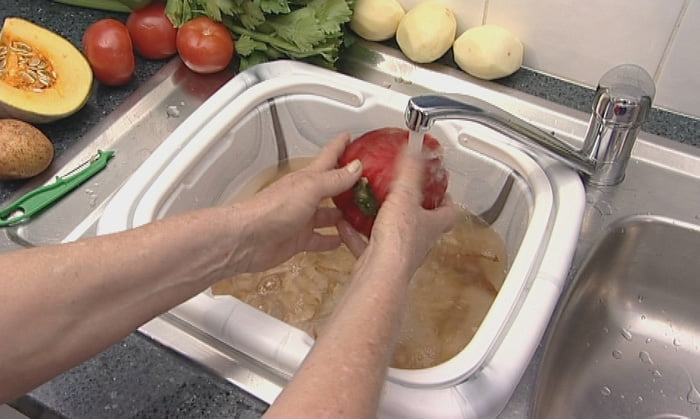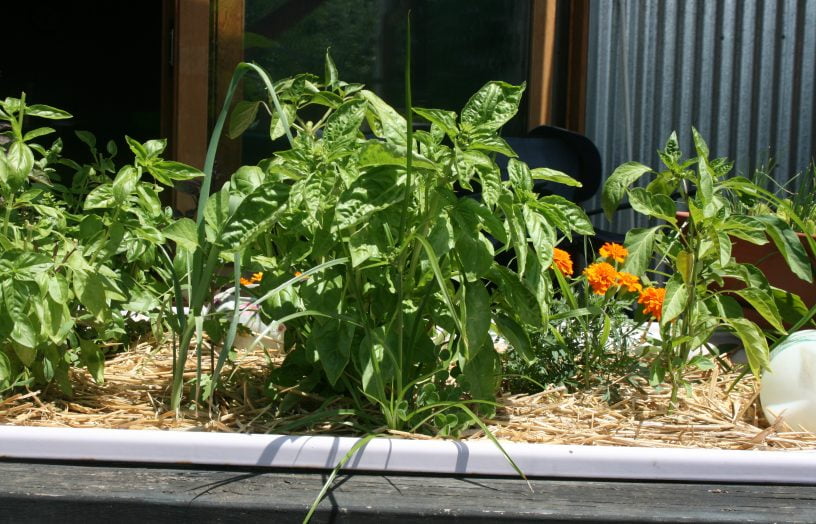Water saving ways


Water saving doesn’t have to be expensive or difficult. We review the best practices and latest technologies to help save water around the home.
This article was published in issue 125 (Oct-Dec 2013) of Renew magazine.
Most water-conscious householders have befriended a bucket or two in the last decade to save water around the home, with Australian Bureau of Statistics figures showing household water use dropped 8% in 2011. With water bill increases and more dry spells on the way, water is still as precious as ever, so how can you save even more water around the home?
Diverters
Hot water taps that are slow to warm can mean cold water goes down the drain. Hot water recirculation systems help by diverting the cold water in the hot water line back to the hot water tank or another use, such as into a rainwater tank, until the water hits the right temperature. The easy-to-install Redwater Diverter is a simple brass valve that diverts cold water, while another retrofit option is the Act D’Mand Kontrol System, a pumped system that recirculates the water. Or simply collect the cold water in buckets to save thousands of litres of water each year.
Bathroom
Around 20% of household water use is in the bathroom, according to SA Water, so improvements to showers, toilets and taps can help save water. The Every Drop Shower Saver is a paddle-like device retrofitted to the shower that quickly switches the water flow on and off while soaping or shaving. With a flick of the paddle the water comes back on at the same temperature and flow, stopping water going down the drain unnecessarily and saving energy from water heating.
Save more water in the bathroom by putting flow restrictors and aerators on the taps and install a low-flow showerhead. Place a brick or water bottle in the toilet cistern to reduce how much water it holds. Or install a dual-flush toilet with a hand basin where you can wash your hands while the same water fills the cistern; for more details see the water saving toilet feature in this issue.
Greywater
A household can produce up to 400 litres of greywater a day and there are a number of simple ways to get this water to the garden. The Hughie Sink is a plastic bucket moulded to fit the shape of most kitchen sinks. Wash the vegies in it, pick it up by the handles and tip it on the fruit trees. The Solar Bathtub Greywater Pump takes bath or laundry water outside in around 10 minutes, and best of all it’s powered by the sun. Or send greywater to the garden by attaching a wastewater diversion valve to the laundry or bathroom drainage pipes. Find out about more advanced greywater systems in the Greywater Systems Buyers Guide.
Garden
The garden is the place to save litres and litres of water, with up to 40% of household water used there. Mulch or use water crystals to keep water in the soil, and control when the garden is watered with a soil sensor that measures moisture, or a rain sensor that suspends irrigation after rainfall. And make the most of those buckets or diversion systems this summer to keep the garden around your water-wise home thriving.
- Buckets! Collect water in the shower, kitchen and laundry
- Take shorter showers
- Fix dripping taps
- Run the dishwasher and washing machine only when full
- Place a brick in the toilet cistern
- Mulch and improve the soil to hold water
- Plant drought-tolerant natives
- Reduce evaporation: water to the roots or at night
- Cover the pool to reduce evaporation
- Wash your car in the rain
- Install a dual-flush toilet with integrated hand basin
- Insulate hot water pipes to keep water warm
- Install a cold water recirculation system
- Install flow restrictors and aerators on taps
- Install a low-flow showerhead
- Collect rainwater: in a tank or DIY with wheelie bins
- Create a DIY greywater diversion system or invest in a greywater treatment system
- Buy WELS-rated appliances—and check for rebates!
- Attach a weather monitor to the irrigation system


